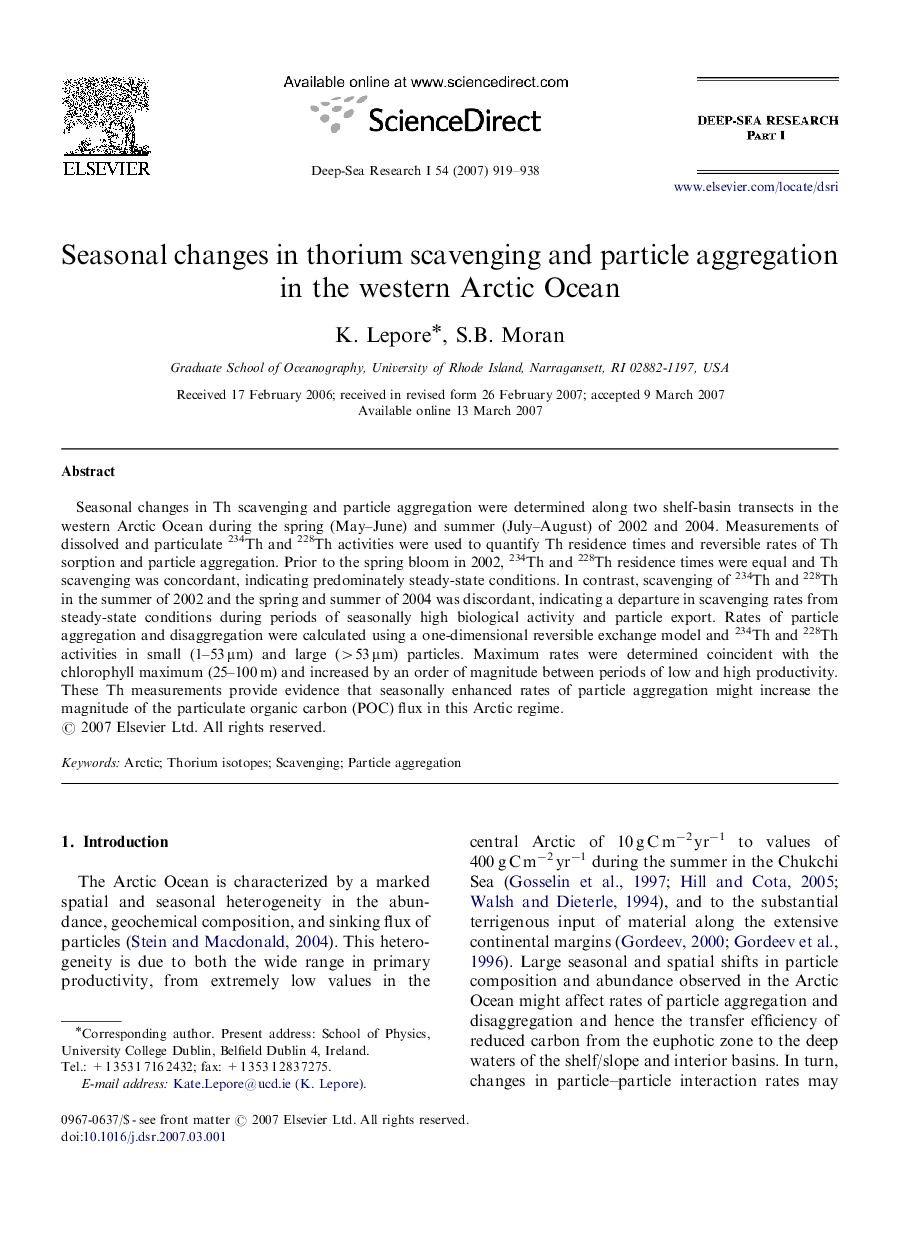| Article ID | Journal | Published Year | Pages | File Type |
|---|---|---|---|---|
| 4535693 | Deep Sea Research Part I: Oceanographic Research Papers | 2007 | 20 Pages |
Seasonal changes in Th scavenging and particle aggregation were determined along two shelf-basin transects in the western Arctic Ocean during the spring (May–June) and summer (July–August) of 2002 and 2004. Measurements of dissolved and particulate 234Th and 228Th activities were used to quantify Th residence times and reversible rates of Th sorption and particle aggregation. Prior to the spring bloom in 2002, 234Th and 228Th residence times were equal and Th scavenging was concordant, indicating predominately steady-state conditions. In contrast, scavenging of 234Th and 228Th in the summer of 2002 and the spring and summer of 2004 was discordant, indicating a departure in scavenging rates from steady-state conditions during periods of seasonally high biological activity and particle export. Rates of particle aggregation and disaggregation were calculated using a one-dimensional reversible exchange model and 234Th and 228Th activities in small (1–53 μm) and large (>53 μm) particles. Maximum rates were determined coincident with the chlorophyll maximum (25–100 m) and increased by an order of magnitude between periods of low and high productivity. These Th measurements provide evidence that seasonally enhanced rates of particle aggregation might increase the magnitude of the particulate organic carbon (POC) flux in this Arctic regime.
